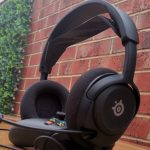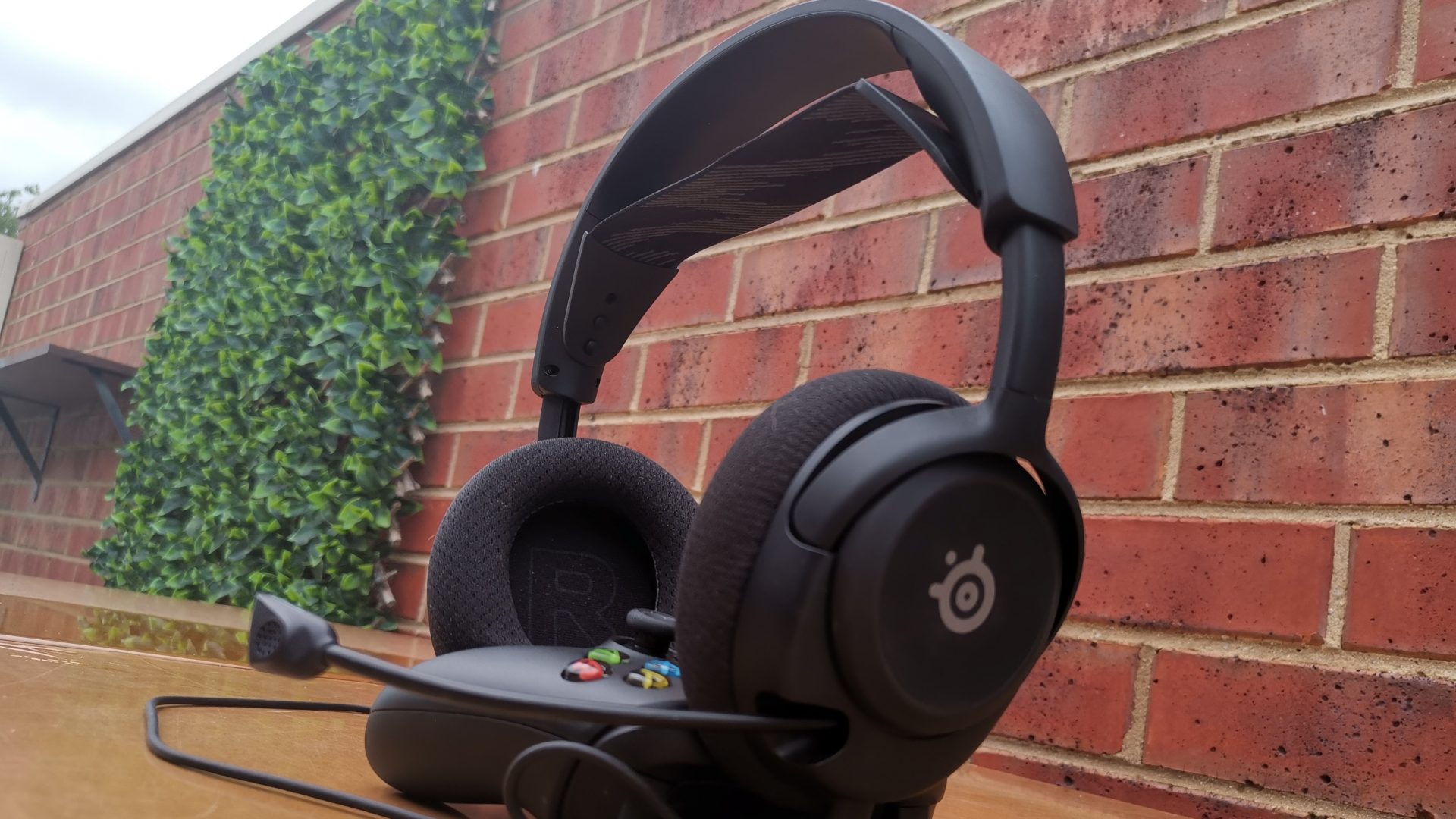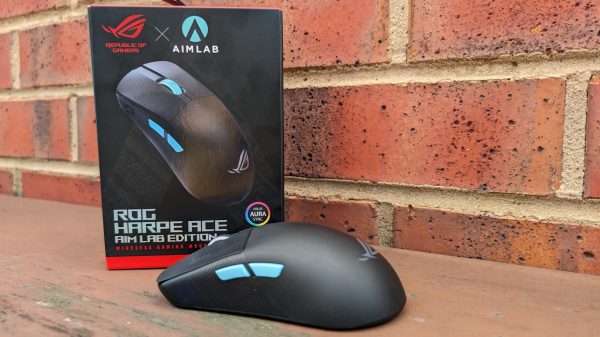SteelSeries set such a high bar with its Arctis line of gaming headsets that its successor seemed destined to rest comfortably upon the shoulders of giants. The Arctis Nova 3 is the RGB-infused, wired mid-range offering of this new gaming audio generation that boasts a competitive price point while retaining the same chassis and sound drivers of its siblings – the Nova 1 and 7. An intriguing offering, the Nova 3’s sole defining feature in standing out from the Nova family is its thin, customisable lighting strip that encircles the outer audio cups.
With the Arctis Nova 3 retailing at $199 (half that of the wireless Actis Nova 7 and $60 more than the Actis Nova 1), SteelSeries faithful might consider that justifying the novelty of RGB lights they cannot even see to appreciate might be their lone consideration in upgrading to this new line. After a solid few weeks of toying with the Arctis Nova 3, I have come away with reservations that extend to the greater Arctis Nova mid-range line and the lights are the least of them.
Let’s begin with what I appreciate about the Arctis Nova 3. For its price, the audio quality out of the box is adequate. My first week of testing involved throwing cinematic titles like A Plague Tale: Innocence and The Quarry at the humble headset. Immediately noticeable is that the headset does an admirable job of amplifying atmospheric details like the crunching of dry earth underfoot or the rustling of trees in the distance – minutiae that a typical midrange sound bar or home audio setup would be lucky to emphasise. This obviously carries over into multiplayer titles, allowing users to get that telltale patter of an encroaching enemy’s footsteps around a corner in Modern Warfare 2.
Lightweight and flexible, the Arctis Nova 3 is slimmer and sleeker than its predecessor
So the Arctis Nova 3 nails the spatial subtleties that gamers will appreciate, but what about general audio use? As this headset utilises the same audio drivers and frame as the Arctis Nova 1 and 7, concerns arise around how this headset will stand out with movies and music. By default, the tenor of dialogue rings crisp and clear, but the meaty goodness of a thumping bassline or dramatic action scene land with something of a whimper. In fact, going back to the older Arctis 7, I found that the default audio arrangement on the classic headset offered slightly punchier bass.
There may be some redemption for the audio range depending on the user and their patience with SteelSeries proprietary Sonar Suite software. While I was left unimpressed with the audio balance of the hardware when used on a console, PC users will find that the Sonar software offers to do the heavy lifting that this headset needs in order to be a competitive daily driver. There are about 20 or so sound profiles for popular titles such as Fortnight and Apex Legends, as well as a profile for emphasising lower-frequency game details like footsteps or dialogue.
Unfortunately, this does mean navigating a software suite that is simple and clean but does have the potential to cause chaos with your default Windows system sound settings. If you are the type of user to swap between different headsets or speakers, the Sonar Suite will often try and override your system’s default or chosen output device. I ran into frequent instances where I would have to do a full system reboot because Sonar would attempt to automatically boot or make background adjustments when detecting non-SteelSeries audio, resulting in being unable to output sound to any device in that session. This would occur even when I closed the software.
PC users will find that the Sonar software offers to do the heavy lifting that this headset needs in order to be a competitive daily driver
The reliance on this software is the death knell of my experience with the Arctis Nova 3. It is required to utilise the advertised spatial audio and RGB customisation. This means that the hardware is, by default, a lacking package for those who may want to exclusively use these headphones on a console. Worse are the missing features on the frame, such as the chat mixer, which is now consigned to the Sonar software. The RGB can only be turned off or on via the headset, meaning that users will need to program their preferences via the software. Not a big deal, but I was underwhelmed to only see three lighting profiles: pulsing, breathing, and independent left/right cup configurations.
On the console side of things, don’t expect to be using USB-C integration with your Switch or nu-gen device. Aside from the fuss of running cables across your living room, the RGB won’t activate out of the box. A barebones manual makes the vaguest inference that RGB should work with a console via USB to the machine and a bit of googling suggested that the hardware will remember your last Sonar RGB configuration. I could not get this to work with my consoles and chose instead to use the included 3.5mm cable to pair with my controllers for a less cluttered experience.
Despite forever adjusting the lengths of the orbiting cups on either side, never did the headset sit comfortably for long, or even short, sessions. That is to say, not all users will necessarily find the Arctis Nova chassis uncomfortable, but it is certainly tailed towards a smaller ear size (and not to boast, but my fleshy sound flaps sit within an ordinary range for a grown adult man). The Arctis Nova frequently sits tight and may ride up the head which causes the earlobes to pull. I could noticeably feel my ears jammed inelegantly into the smaller circular cups, and it got hella hot and clammy in this Spring weather.
Setting the cups to pulse different colours independent of one another is a feature that the ghosts in your gaming den will enjoy
The Arctis Nova’s three tiers of adjustment on the ski band are a downgrade on this model, where previously the velcro strap that encircled the entire upper headrest would mould and stretch to the user. As the smaller cups required me to fold my fucking earlobes within the cup’s mesh beds, small movements and the linear ski band’s resistance over short periods would drag the headset up. This means having to manoeuvre the headphones for a comfortable resting position every five to fifteen minutes – a noticeable annoyance that had me immediately yearning for the Arctis 7 I rehomed with my partner.
Final Thoughts
What happened, SteelSeries? Aside from the smaller cup size and linear ski band adjustment, there is little that this headset does especially wrong. Yet, there is no single thing that the Arctis Nova 3 does especially well. The Arctis forebears spoiled gamers with a mid-range series that felt great, sounded robust, and was feature complete. The move to hide standard Arctis features like the chat mixer behind the Sonar software is a significant misstep, leaving a subpar headset for console users and a difficult proposition for anyone not sympathetic to toying with a software suite to bring their headset to life. And the RBG? A $60 gimmick that does little to stand out.
Review unit supplied by the manufacturer
Click here for information on WellPlayed’s review policy and ethics






































